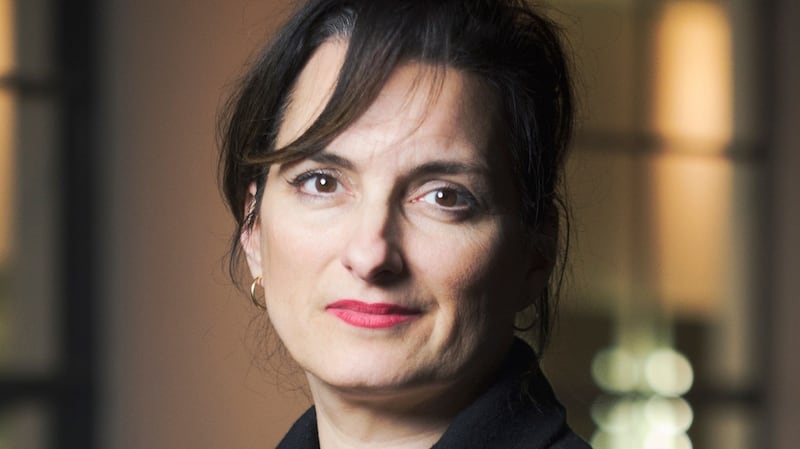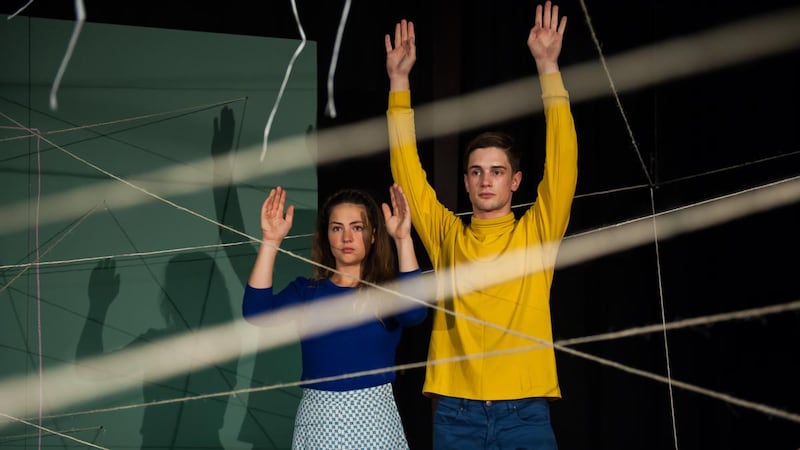"It's always so strange in theatre," says Carly Wijs. "There is stuff you think, 'People are going to love this, this is going to be great.' Then it's like, 'Meh.' This was something I felt, 'Well they'll probably hate it, but I really enjoyed making it. Let's do it.' Then all of a sudden it takes off. It's difficult to predict sometimes."
The Brussels-based playwright is reflecting on the success of her play Us/Them. Since it was originally staged in 2014, it has won numerous awards and enjoyed sold-out runs all over the world. This, despite its decidedly bleak subject matter.
On September 1st, 2004, students and their parents had gathered at School Number One in Beslan, North Ossetia, to attend a ceremony celebrating the beginning of the school year. As the ceremony drew to a close, armed Chechen militants stormed the school and took more than 1,100 children, parents and teachers hostage in the school gymnasium. A terrifying 53-hour siege ensued. On the third day, two powerful explosions occurred in the gymnasium. Heavy fighting between the security forces and terrorists followed. Eventually, the siege ended. Some 334 hostages were killed, more than half of whom were children. It remains one of the most shocking terrorist attacks in recent memory.
Us/Them tells the story of Beslan from the perspectives of two children swept up in the terrifying ordeal. Aimed at a younger audience, the show sees the two characters – a boy and a girl, played by Roman Van Houtven and Gytha Parmentier – attempt to process and make sense of the attack.
Using chalk and string, they reconstruct the school gymnasium in real time on stage as though they are playing a demented game of hopscotch or Double Dutch. They rattle off statistics about the town of Beslan – like how it has 53 mosques or 48 butchers – before getting into the nitty gritty of the attacks. It’s an inventive, stirring piece of theatre that explores terrorism, media and the process of othering.
Children and terrorism
Wijs wrote the show after she was commissioned by Bronks, a Dutch-language theatre for young audiences in Brussels, to write a play for children. She came up with the idea for the show after a conversation she had with her eight-year-old son about the Westgate shopping mall attack in Nairobi.
“My son had seen that on the children’s news,” she says. “He had come up to me and told me about it. He was like, ‘These people were shooting at people. There was a boy and his mother got killed. One of the terrorists gave him a bar of chocolate and he could go.’ Then he was off. It was just a fact thing he was telling me.”
Wijs was struck by how cool and dispassionate he was when it came to reeling off the particulars of the attack. It seemed to her that children processed horror much differently to adults. “I thought, maybe there is a way to talk about this subject to children if we find this distance, this aloof way of treating it,” she says.

She decided to set her play in Beslan, figuring that the school setting would resonate with children. Like many, she vividly recalls watching the Beslan school siege unfold on television. “We were glued to it at the time,” she says. “These huge events have a violent pornography element to it. You can’t turn away from the horror. You keep watching and rewatching it.”
The play may have been a tough sell at first, but it was embraced by Belgian theatre programmers. In its second year, it was performed more than 50 times. The English-language version debuted in 2016 as part of the Edinburgh Festival Fringe and later transferred to the National Theatre in London. This month, it will have its Irish premiere in the Pavilion Theatre as part of the Dublin Theatre Festival.
Adult audiences
As the show has toured the world, Wijs has observed how it has been received differently by international audiences. In Europe, the audiences are typically half-parents, half-children. In English-speaking countries, the play has often been performed for exclusively adult audiences. "In the first run of 60 performances in the States, Australia and Britain, they must have had thousands of people in the audience," she recalls. "I think in total they had about twenty-five children.
“The way they communicate with children is different, I think.”
Likewise, she says the play has always had a so-so reaction in the United States. "I have realised that for them it's just too close and personal because they actually live with school shootings every year," she says. "For them, it's very difficult to have that distance."
A lot has changed since the play was first staged. Wijs says she initially wrote the play for "people who see terrorism on TV but who are not necessarily victims of it". By 2016, however, there had been numerous terrorist attacks in Europe. The idea of being caught up in a terrorist attack was no longer unfathomable for audiences in Belgium or France. "All of a sudden, it became very real for us," she says.
But still it worked.
“For children, the most horrifying moment in the play is when the girl takes off her clothes because she’s too hot. To be in school in your underwear is the most horrifying thing that can happen to you. I always find that comforting as an adult to sit next to them and to feel like, ‘Oh God, they’re occupied with different stuff than what we’re occupied with.’”
Media narratives
In this increasingly divisive political climate, the play has managed to take on a new significance. For instance, the play explores how the media frames news stories. In an era of fake news, it is Wijs’s hope that children will leave the play with a more sophisticated understanding of how the media operates.
“If I could just give them the knowledge that everything you watch is a story and is being constructed. The media present it to you as the truth but actually it’s a constructed narrative.

“That’s something they can take away from the play. Every time they watch the news they can say, ‘Who brought this news? Is it the Guardian or is it the Daily Mail?’ It’s very important they start learning about that.”
Similarly, the play repeatedly touches on the idea of othering. At various points, we hear the two characters in the show speak disparagingly of Chechens, parroting things they’ve likely heard at home from their parents. “The fathers are addicted to drugs,” says the girl, confidently. “The mothers all have moustaches and have to work like horses.”
It's not a million miles away from US president Donald Trump claiming that Mexico was sending drugs, rapists and crime to the US.
“A friend of mine once said, look at the whole history of mankind and barbarism is not so far away,” says Wijs. “If you consider the forest to be barbarism and the fields to be culture . . . If you realise we have only stepped out of the forest 10 steps then you realise how easy it is to run back in there. Us/Them always works. Look at Trump.”
Us/Them written and directed by Carly Wijs runs from Tuesday, October 8th-Sunday, October 13th, at Pavilion Theatre, Dún Laoghaire, as part of this year's Dublin Theatre Festival. paviliontheatre.ie dublintheatrefestival.ie


















